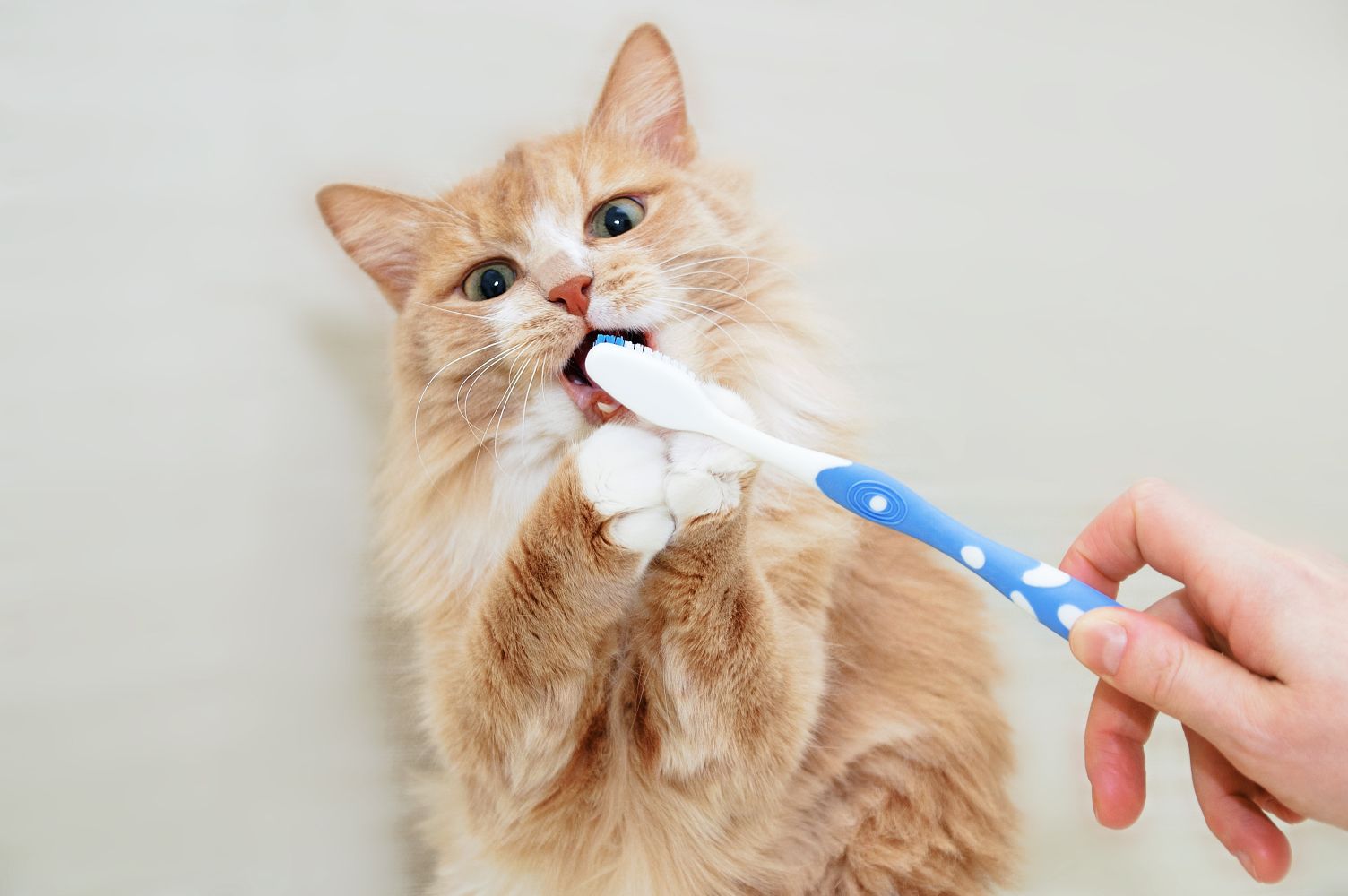Make Pet Dental Health A Priority

Each and every day, pet owners make decisions that impact the overall health and wellness of their pets. Choosing optimal nutrition, making time for exercise, and providing environmental enrichment are all important priorities that have a powerful influence on lifelong wellness. What if there was just one extra task that helped your pet achieve even greater vitality, and maybe even enjoy a longer life? Caring for your pet’s teeth and gums might not be a primary focus, but excellent pet dental health is paramount to their day to day well-being and longevity.
Front and Center
Most pets show affection to their owner’s by licking them. They also use their tongues when grooming, and we see their entire mouth when they pant, yawn, bark, or meow. Their teeth and gums are on full display more often than not, and yet, they receive a shocking lack of attention.
A majority of all pets over the age of three show evidence of periodontal disease. In the absence of regular brushing at home and annual professional cleanings, gum disease can progress to the point of excruciating pain, bleeding gums, bone and tooth loss, infection, and even systemic illness. Oral bacteria can seep into the bloodstream and cause major damage to the heart, kidneys, and liver.
Without proper and consistent intervention, pets may face a decreased quality of life and even a shorter lifespan.
In Front Of Problems
The approach to fixing things only when they need repair is not advantageous to pet dental health. It is crucial to stay in front of developing problems before they take root. Only the first stage of periodontal disease is considered reversible. Once gums start to recede because of tartar buildup, the disease can only be slowed down.
Preventive pet dental health involves a daily strategy to keep your pet’s mouth clean and healthy. This can be done via manually brushing their teeth and gums with a specially-formulated pet toothpaste. The benefits to home care are reinforced by annual cleanings under anesthesia, examination, and digital X-rays.
Pet Dental Health for the Win
When your pet is examined every year, we pay close attention to the appearance of their teeth and gums. Typically, the first sign of dental disease is bad breath. A look at their back molars may confirm obvious tartar build up on the gum line. Much of the extent of periodontal disease occurs beneath the gum line where we cannot see it. Placing a pet under anesthesia is the safest choice in order to take digital radiographs, remove plaque and tartar from tooth surfaces, and polish the teeth.
What to Look For, How to Help
If your pet has bad breath, it’s time to act. Train them to accept a soft bristled toothbrush and pet toothpaste in the following steps:
- Start with gently inserting your finger inside your pet’s mouth, concentrating on their back molars.
- Reward them with treats and praise when they calmly allow you to inspect their mouth.
- Slowly introduce the toothbrush and toothpaste, separately, and then together.
- Over time, they will learn that this is okay and they may even enjoy having their teeth brushed.
- Daily brushing is ideal, but three times a week is okay.
- Supplement off-days with healthy chews, water additives, or dental treats.
February is Pet Dental Health Month. Please call us at (330) 665-5915 if you need help brushing your pet’s teeth, or simply want to have their teeth and gums examined. We always look forward to seeing your pet at the Gentle Vet.
